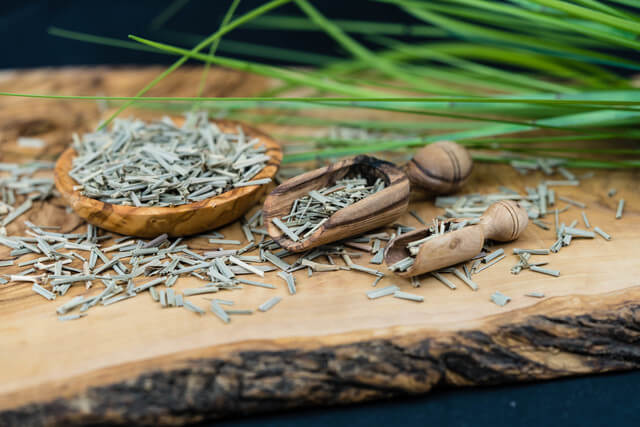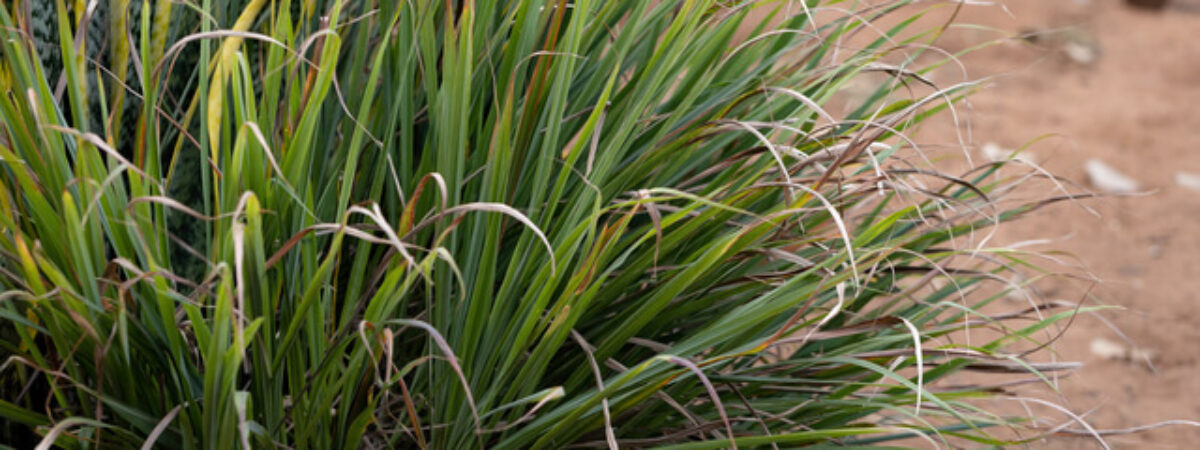Lemongrass, scientifically called Cymbopogon citratus, is a perennial ornamental grass and belongs to the Poaceae family. Lemongrass is native to the tropics mainly.
These have originated from India and Sri Lanka. It grows well in USDA hardiness zones of 10 to 11 whereas it can also be grown in zone 9 by bringing them indoors during winter.
In addition to increasing curb appeal, this ornamental grass provides fresh herbs for cooking. In your soups, stir-fries, and teas, lemongrass’s tall, slender leaves are as appealing wafting in the summer breeze as they are tasty.
Certain edible landscaping plants, like lemongrass, can fulfill two desires for gardeners who are looking to maximize their return on investment. In autumn, the foliage becomes burgundy and red, adding a beautiful color to the gardens.
There are various species of lemongrass that one can choose from such as West Indian lemongrass (Cymbopogon citratus) and East Indian lemongrass (Cymbopogon flexuosus).
Both of these varieties have a beautiful citrus aroma and are used for kitchen purposes. There are other varieties that are mainly used for controlling pests in the garden such as Cymbopogon nardus and Cymbopogon winterianus.
These varieties have a grassy aroma as compared to other lemongrass varieties.
Lemongrass grows in clumps, developing multiple stalks from the same base. Growing up to five feet high and four feet wide, it can spread out over a wide area. Click To TweetLemongrass grows in clumps, developing multiple stalks from the same base. Growing up to five feet high and four feet wide, it can spread out over a wide area.
The leaves and stems of this plant are edible, aromatic, and the leaves and stalks both possess a strong citrus scent and flavor as the name suggests.
Leaf and stalk are both used to flavor soups and curries, but they are removed after cooking due to their fibrous nature.When the stalks have at least half an inch of diameter, the stalk’s inner core, which is highly prized, becomes apparent.
Young stalks contain mainly fibrous leaves, but as they mature, their insides develop a soft center that can be chopped and consumed without being removed from the cooking process before consumption.

Growing Guide
As Lemongrass is a tropical perennial plant, it cannot tolerate cold temperatures. So it can easily be grown in an area where the temperature is warm.
These plants are quite easy to grow, once the plants grow up to a certain height, there is no need for much care and attention towards the plant.
If you are living in a zone where there is a cold climate, it is always better to plant lemongrass in a container so that you can shift the plants indoors when winter comes.
These plants usually take 70 to 100 days to fully mature from seeds. However they require bright full Sunlight and a well draining soil medium to grow.
They usually expand around 4 feet in diameter, and hence require enough space to grow. So it is best to choose a location where there is enough space for the plants to grow freely.
These plants are pest repellant and the oil extracted from these plants can deter mosquitoes as well.
Caring Guide
Soil
Lemongrass plants grow well in rich and loamy soil with good drainage facilities. There are various soil amendments that can be added to the soil in order to get the required medium for the growth of these plants.
The soil amendments are compost, leaf mold and manure that can be added so that the soil will be enriched with all the essential nutrients.
Light
Lemongrass plants grow well in full bright Sunlight. The plant should get exposed to at least six hours of Sunlight. This helps the plant to produce more healthy foliage.

Water
These plants grow best when properly watered till they are growing, but after reaching a certain height i.e. once it is established fully, they can tolerate drought even. Mulching helps in retaining moisture in the plant and also helps in reducing weeds.
Temperature and Humidity
Lemongrass grows well in hot temperatures. When the night temperature becomes 60 degrees fahrenheit , it is the best time to plant the seeds of these plants.
They cannot tolerate frost and hence they eventually die if kept outside during winters. So it is better to bring them inside when the frost arrives i.e. temperature falls below 40 degrees fahrenheit.
Fertilizer
Since Lemongrass is a grassy plant, it requires more nitrogen fertilizer as compared to other nutrients for healthy foliage growth.
However, adding manure tea will also help to meet the requirement of other nutrients to the plant through watering.
Pruning
As these plants grow bushier taking enough space, it is better to prune them occasionally by cutting out dead and tidy leaves.
Usually, lemongrass dies back in winters and the leaves turn brown. When the summer arrives, the plants again start producing healthy and new leaves eventually.
Usually lemongrass die back in winters and the leaves turn brown. When the summer arrives, the plants again start producing healthy and new leaves eventually. Click To TweetHarvesting
Lemongrass is a fast growing plant, they can even withstand harvesting when they are in their younger stage and hence there will be no negative impact on the growth of the plant.
You can steep the green leaves of the plant in tea or broth although they are too tough to eat. A mashed or minced stalk can be used as a garnish or added to dishes for a lemony flavor.
To remove individual stalks from the clump, use a hand trowel and remove the roots as well. Prepare the tender white stalks by chopping them, or freeze them whole. Remove the tough outer leaves and chop the tender white stalks.
Storage
It is quite easy to preserve these plants. All you need to do is to cut the leaves and shoots into pieces of 3 to 4 inches each and store them in a zip lock bag inside a freezer.
This can be kept for a year even. When you want to use them, just defrost the frozen pieces and use them just as you use a fresh herb in your dishes to enhance its flavor.
Growing Lemongrass from seed
One of the easiest methods to grow lemongrass is from seeds. The seeds germinate well in warm and moist conditions.
If you are growing the plant in a container, then make sure to prepare a sterile potting mix soil and sow the seeds in them by pressing it inside the soil and placing the pot in a Sunlight falling area.
Keep the soil moist throughout the germination period, which usually takes 10 to 14 days. When you notice that your plants have reached a height of 3 inches then prune the plant to get more growth.
Conclusion
Lemongrass is extremely one amongst the best plants to grow, provided as long as you defend it from the cooler climatic conditions. It adds a pleasant, bright aroma and style to the room and engaging leaves to the garden.
Hence grow this wonderful herb in your garden and share your experience in the comments below.
You may also like to read
How to Plant, Grow And Care for Cuban Oregano – A Complete Guide






